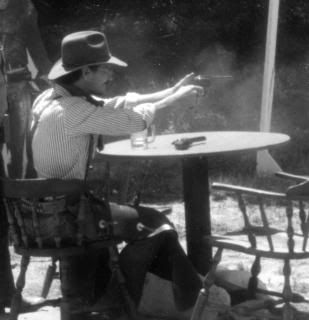Go  | New  | Find  | Notify  | Tools  | Reply  |  |
Member |
I've used 230gr 45 Auto with 700-X for nearly 15 years and have been happy with it but I'm considering moving on to another powder. I was comparing 700-X with WST and Titegroup (unlikely I will use Titegroup) and was confused by the pressure data. WST at 733 fps gives a pressure reading of 13,900 but the faster moving 700-X at 758 fps gives a pressure reading of 12,700. I would of thought the faster moving load would have the higher pressure reading. What should those pressure readings tell me about recoil and getting back on target faster? | ||
|
Member |
Need to make sure the units are the same cups, psi. I use WST for all my 45acp loads. It will burn clean at loads well below minimum. And the powder is one that is consider cool burner unlike TG which burns extremely hot. Now WST is also reverse temp sensitive too. So if you work up loads in the summer time you need to check them again in the winter time as it cools off. David P229R 9mm, Nitron, Beavertail Frame, Night Sights, DA/SA, SRT & Short Reach Trigger | |||
|
| member |
Sorry, I cannot answer the pressure questions. But I have used WST for as long as you have the 700-X. I find it to be a smooth shooter, and back on target quite easily. Using a Precision Delta 230gr FMJ-RN, with 4.5gr WST makes major power factor with little to spare for temperature variations. I have gone to 4.7gr, which runs about 765fps. WST also works well with 10mm loads for range/match use, using again the heavy bullet (200gr in this case). But it is hard to make major with the SIG 10mm and its factory springing. The best I can do is about 185 power factor. | |||
|
| Member |
The pressure and velocity differences you mentioned are not that significant. You could get bigger differences comparing the same load in two different guns. See the excellent article in the Speer Manual #14 Also, muzzle velocity is not just dependent on peak pressure when comparing different powders. In general, slower burning powders will give higher velocities at the same pressure as faster burning powders. Recoil energy is calculated from the mass leaving the barrel (bullet + powder), the muzzle velocity, and the weight of the gun. It's not directly related to peak pressure. | |||
|
Member |
1000psi diff could appear from day to day/lot to lot variations. WST has been working great for me for 25yrs in 45acp & 9mm & 40 minor. The only issue, & its minor, is reverse temp sensitivity. Its only an issue at the extreme ends of the temp spectrum though & only if you are loading max loads.This message has been edited. Last edited by: fredj338, IF YOU AREN'T HANDLOADING, YOU AREN'T SHOOTING ENOUGH! NRA Instruc: Basic Pistol & Met Reloading | |||
|
| Member |
WST 733 fps 13,900 something 700X 758 fps 12,700 something Well, we would need to know the following: 1) what pressure units 2) were they fired in the same gun 3) are they the same bullet construction (all jacketed or all plated or all cast) 3) were they fired with the same bullet, COL, cases, and primers? Compare different manuals and you'll see that all components have an effect, large or small. 4) do you KNOW that one or the other is faster in a .45 Auto case under a 230 gn bullet? Burn rate is not a fixed number in terms of cartridges where case volume and pressure effect the burn rate. I have burn rate charts where 700X is significantly slower and where 700X is significantly faster than WST. 5) Have you looked in different manuals and seen the variations those noted in (3) above? I have little data, but here is the sum of my data: Bullet Weight Powder Weight Velocity Note P.F. COL TMJ 230 700X 3.8 0 1.260 TMJ 230 700X 4.6 710 Start 163 1.260 Rem MC 230 700X 5.0 770 Max 177 1.260 TMJ 230 700X 5.1 815 Max 187 1.260 FMJ 230 WST 4.1 710 Start 163 1.275 FMJ 230 WST 4.7 0 1.260 FMJ 230 WST 4.9 800 Max 184 1.275 So, from my manuals, I see different bullets being tested, different bullet construction being tested (TMJ are plated and Rem MC are FMJ bullets), and different COL (just to start with), yet I would say they are the same. As far as the original data, putting aside all the apples-to-oranges issues, that exact lot of 700X could be a little slower than that exact lot of WST. These readings would tell me very little about perceived recoil or "getting back on target" as those are subjective. Recoil = momentum = power factor, so the slower the bullet, the lower the recoil. Then, we have perceived recoil where many like a HEAVY bullet at slow velocity over a LIGHT bullet at high speed, both giving the same power factor or recoil, but the slower bullet feels more like a "push" in the hand than a "snap." For me, I find time back on target is a bit better with a snap, but that is me and I'm not competing any more. | |||
|
| Powered by Social Strata |
| Please Wait. Your request is being processed... |
|
© SIGforum 2025